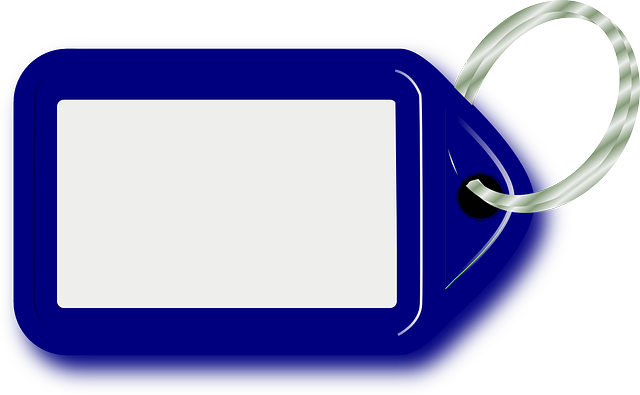Skin tags, benign growths commonly appearing in the neck and armpits, are influenced by genetics, hormonal shifts, obesity, and friction. They can be categorized as non-acral (from rubbing) or acral (potential underlying medical issues). Manchester residents have multiple tag removal options, including cryotherapy, surgical excision, laser treatment, and topical creams. For a gentle, at-home approach, consider salicylic acid creams or cryotherapy, though results may take time. Dermatologists are crucial for professional removal, addressing aesthetic preferences, potential skin cancer risks, and providing tailored treatments like cryo or surgery. Seek expert help if tags cause distress or exhibit unusual changes.
Skin tags, those small, harmless growths on the skin, are common but often sought to be removed for cosmetic reasons. Understanding their causes and types is the first step in navigating effective removal options, especially focusing on Manchester tag removal techniques. From common surgical methods to non-surgical at-home treatments, this guide explores various ways to address skin tags. Learn when to consult a dermatologist for professional help and embrace a smoother, tag-free skin journey.
- Understanding Skin Tags: Causes and Types
- Common Methods for Manchester Tag Removal
- Non-Surgical Options: At-Home Treatments and Care
- Seeking Professional Help: When to Consult a Dermatologist
Understanding Skin Tags: Causes and Types
Skin tags, also known as acrochordons, are small, soft skin growths that typically appear on the neck, armpits, or groin area. They are usually harmless and often go unnoticed, but some individuals may find them aesthetically displeasing or uncomfortable. Understanding their causes and types is essential when considering Manchester Tag Removal.
There are several factors that contribute to the development of skin tags, including genetics, hormonal changes, obesity, and friction or irritation of skin. They can be further categorized into two main types: acral and non-acral. Non-acral skin tags are more common and often occur due to repetitive rubbing or pressure on a specific area. Acral skin tags, which appear similar to warts, are less frequent and may be associated with underlying medical conditions, such as hyperhidrosis (excessive sweating) or certain genetic disorders.
Common Methods for Manchester Tag Removal
When it comes to Manchester Tag Removal, several common methods are available, each with its own pros and cons. One popular approach is cryotherapy, where extreme cold is used to freeze and destroy skin tags. This quick and relatively painless procedure is often preferred for its non-invasive nature and high success rate. Another method is surgical excision, involving a minor procedure where the tag is cut off with a scalpel or scissors under local anesthesia.
Laser treatment is another option for Manchester Tag Removal. This method uses concentrated light to burn away skin tags, leaving minimal scarring. While it may be more expensive and involve multiple sessions, laser treatments are known for their effectiveness and ability to target specific areas without affecting surrounding skin. Additionally, topical creams containing salicylic acid or other keratolytics can help remove skin tags over time through regular application, making them an at-home option for those seeking a more gradual approach.
Non-Surgical Options: At-Home Treatments and Care
When considering Manchester tag removal, non-surgical options like at-home treatments offer a gentle and cost-effective approach. These methods are ideal for minor skin tag removal and can be done in the comfort of your own home. Over-the-counter creams containing salicylic acid or nitrogen freezes (cryotherapy) are popular choices. Salicylic acid softens the skin tags, allowing them to fall off gradually, while cryotherapy uses liquid nitrogen to freeze and destroy the growths.
Both methods require patience as results may take several weeks. It’s essential to follow instructions carefully and consult a dermatologist if there is any concern or for more severe cases. These at-home treatments provide a simple solution for those seeking to remove skin tags discreetly and without surgery in Manchester.
Seeking Professional Help: When to Consult a Dermatologist
If you’re considering Manchester tag removal, it’s important to understand when to consult a dermatologist. While small skin tags are usually harmless and may go away on their own, some individuals prefer professional removal for aesthetic purposes or due to discomfort. A dermatologist can offer safe and effective solutions tailored to your needs, including cryotherapy (freezing), surgery, or topical treatments.
They can also address any concerns related to skin tags, such as potential skin cancer risks, and provide guidance on maintenance and aftercare. If your skin tags are causing you distress or if there are signs of unusual growth, bleeding, or changes in appearance, it’s wise to seek professional help for Manchester tag removal.
Skin tags, though often harmless, can be unsightly and uncomfortable. Fortunately, with various effective methods available for Manchester tag removal, you have options. From common procedures like freezing or cutting, to non-surgical treatments and professional medical interventions, understanding your choices empowers you to decide which method best suits your needs. Remember, if skin tags cause persistent discomfort or concern, consulting a dermatologist is always an informed step towards achieving clear, confident skin.
